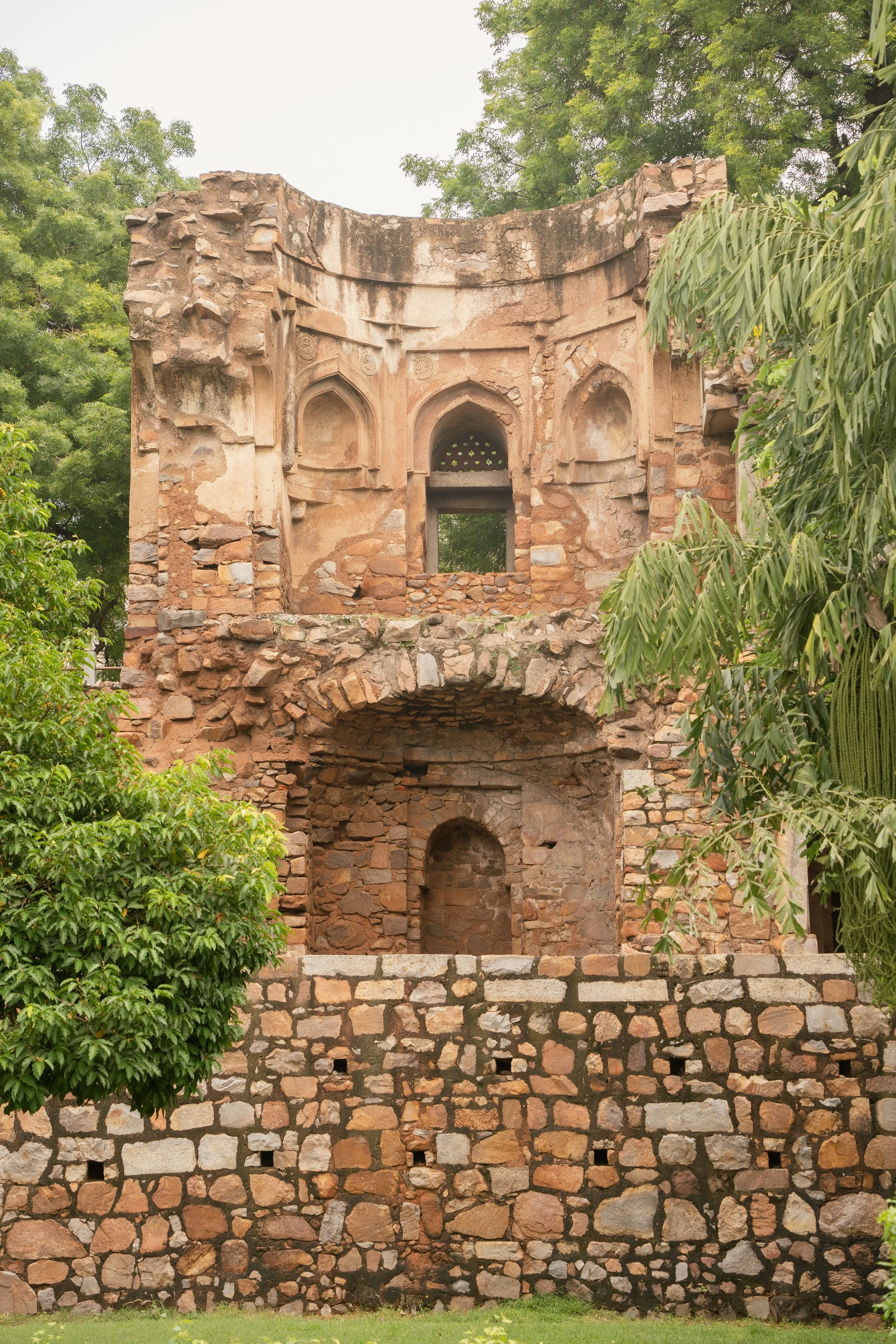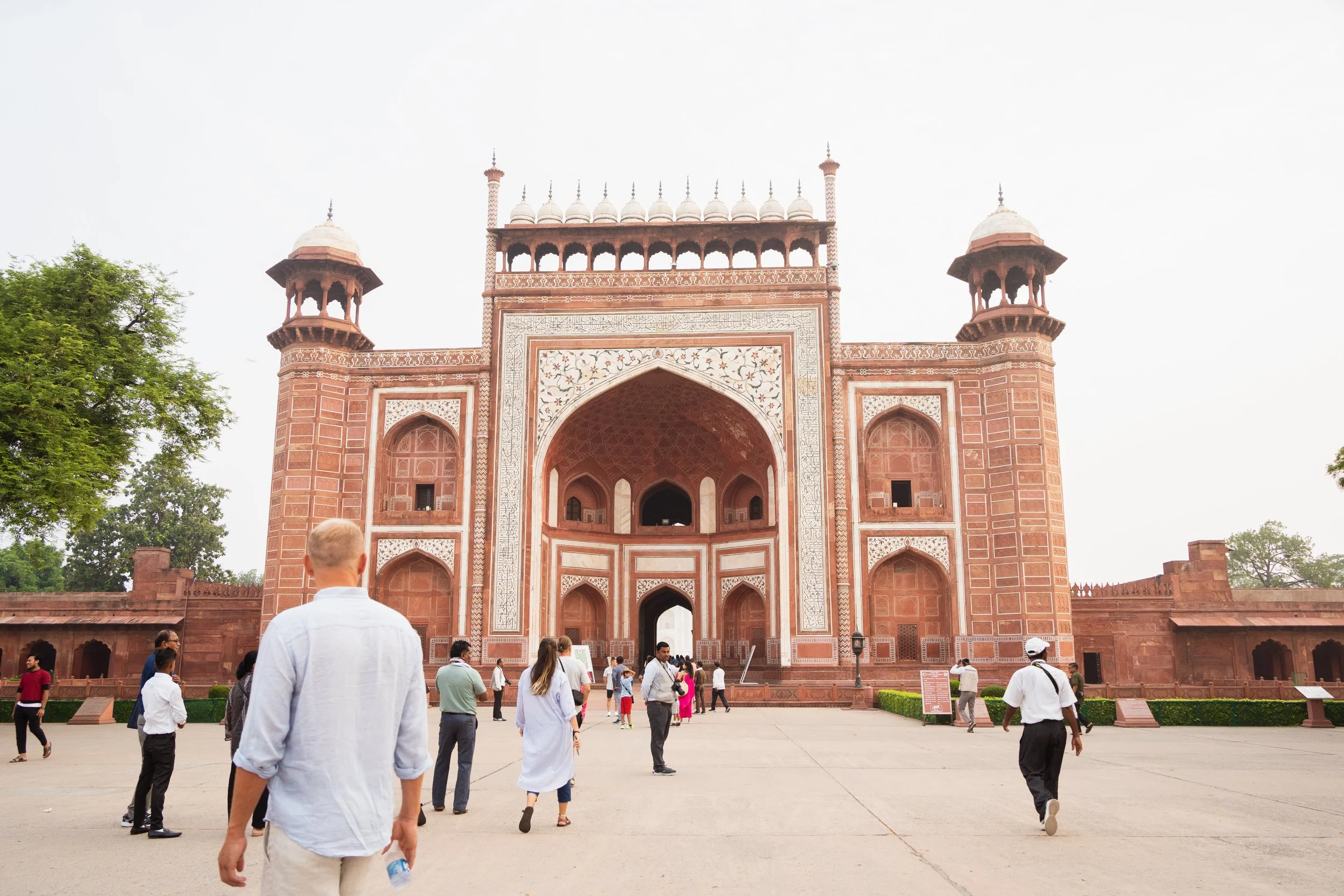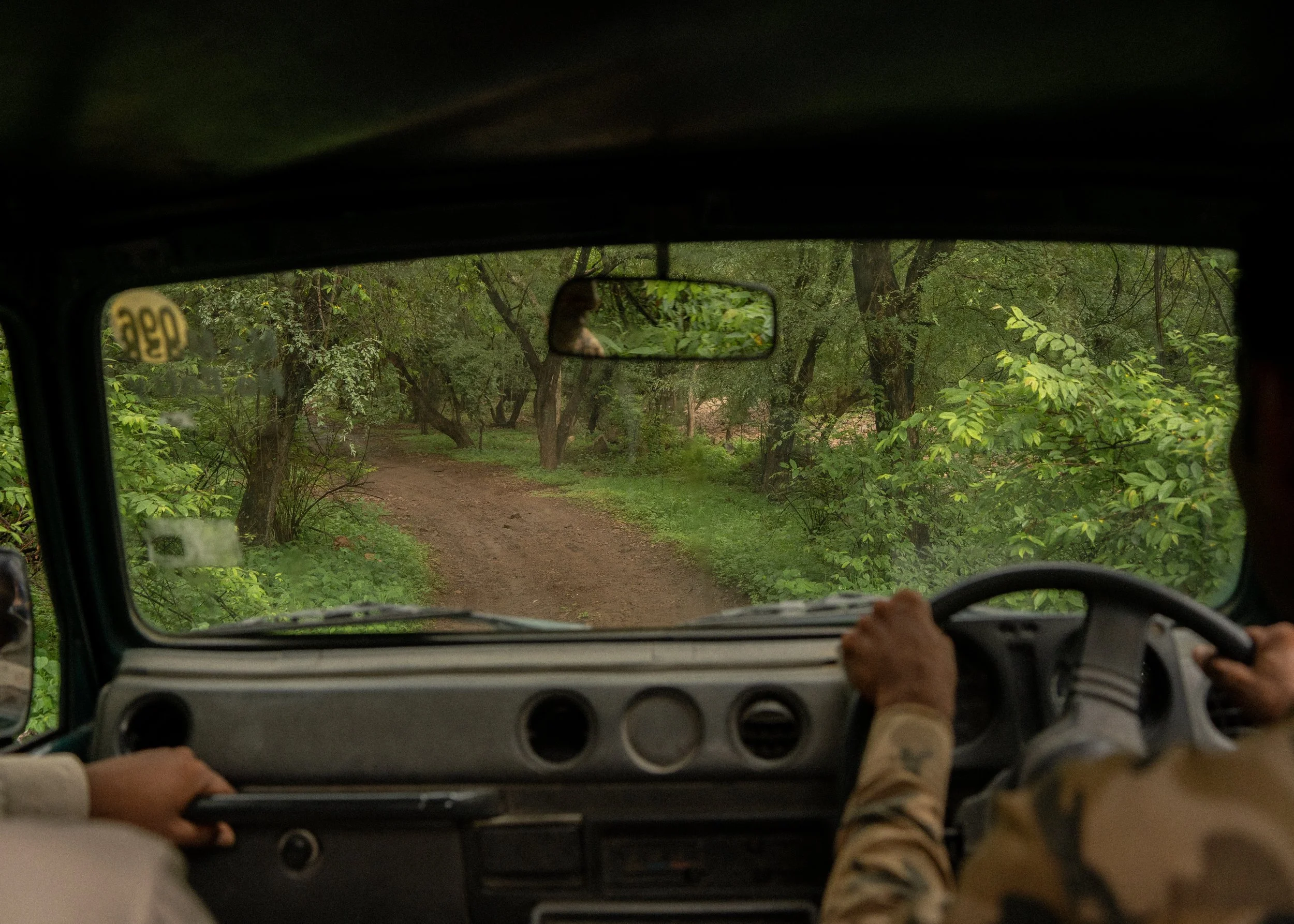Exploring India: from bustling cities to serene backwaters
Preparing for the journey
India is a country of contrasts, a place where vibrant chaos meets serene landscapes. Before embarking on our four-week adventure, we made sure to research key aspects like transportation, cultural norms, and food safety.
When it comes to cultural norms, dressing modestly is important, especially in rural areas and religious sites. Women may feel more comfortable wearing long skirts, loose pants, or kurtas, while men often opt for long trousers rather than shorts. Another key aspect of Indian culture is the significance of personal space—or rather, the lack of it! Crowds are part of everyday life, whether in bustling markets, train stations, or even while waiting in line.
Food safety is another crucial consideration. While Indian cuisine is rich, flavorful, and diverse, travelers should be mindful of where and what they eat. Street food is tempting, but opting for stalls that are busy with locals can reduce the risk of foodborne illness. Also drinking bottled or filtered water, and carrying medication for digestive issues can make a huge difference in enjoying the local food scene without any unpleasant surprises.
Transportation in India is an adventure in itself. Trains are a popular and affordable way to travel long distances, but delays of several hours are common. It’s a good idea to check real-time updates online and have a backup plan in case of cancellations. Tuktuks and taxis are convenient for short distances, though haggling over fares is often necessary unless using a ride-hailing app like Uber or Ola. In some cities, metro systems like those in Delhi and Mumbai offer a fast and reliable alternative to road travel, where traffic congestion can be intense. Renting a scooter in smaller towns, like Hampi or Udaipur, can be a fun way to explore, but the roads—and driving habits—require confidence and caution.
Old Delhi
Our adventure began in Delhi. After dropping our luggage at the hotel, we decided to take a walk through Old Delhi. It was an overwhelming experience—the streets were packed with tuktuks, rickshaws, and food stalls, while the constant honking created an almost deafening soundtrack to the city. As we strolled through the narrow lanes, we found ourselves constantly stepping aside to make way for passing rickshaws, tuktuks and motorbikes, weaving their way through the crowds with impressive skill. It wasn’t the most peaceful experience, but it was certainly an exhilarating one. Even something as simple as crossing the street became an adventure, as we had to carefully time our steps between the endless stream of tuktuks and pedestrians.
Wanting to escape the crowds and chaos, we chose to stay in Hauz Khas, a trendy neighborhood built around an old Persian ruin. This area had a much more relaxed vibe. During the day, the narrow streets were lined with boutique stores, street art, and local designer shops, while in the evenings, the area came to life with rooftop bars and live music venues. We spent a bit time exploring its cozy cafés and enjoying delicious meals in its many restaurants. Unlike the intensity of Old Delhi, Hauz Khas felt like a peaceful retreat, where locals and travelers alike gathered to unwind. The nearby Deer Park and Hauz Khas Lake also provided a refreshing escape from the city’s constant buzz, with lush greenery and quiet walking paths. It was the perfect spot to recharge before diving deeper into our Indian adventure.
Taj Mahal
Due to the train delay, we arrived at our hotel at 2 AM, only to be picked up by our guide at already 5:30 AM for a sunrise tour of the Taj Mahal. Despite our exhaustion, the sight was mesmerizing. Bathed in the soft morning light, the white marble seemed to glow, enhancing its ethereal beauty. As the crowds were still relatively small, we had the chance to take in the breathtaking details up close—the delicate floral inlays of semi-precious stones, the perfect symmetry of the structure, and the grand archways that framed the sky. Built by Emperor Shah Jahan in the 17th century as a mausoleum for his beloved wife, Mumtaz Mahal, the Taj Mahal is not only a symbol of eternal love but also an architectural masterpiece blending Persian, Indian, and Islamic influences. Every part of the monument, from its massive dome to the reflective pools in front, was designed with precision to create a sense of harmony and grandeur. We highly recommend hiring a guide to fully appreciate the rich history, hidden details, and the immense craftsmanship behind this world wonder.
That evening, we boarded another night train to Ranthambore, which, unsurprisingly, was delayed by four hours. Our hotel staff kindly waited for us until 4:30 AM, even allowing us to have breakfast after the usual hours so we could rest.
Ranthambore – the search for tigers
After hectic days of travel, we took the first day in Ranthambore to relax. That evening, we set out on our first safari, hoping to spot a Bengal tiger. Unfortunately, due to recent rains, water was abundant in the park, reducing the chances of seeing animals gather at predictable spots.
At 6 AM the next morning, we went for a second safari - hoping to have more luck - but once again, the elusive tiger remained hidden. Our guide had warned us that during the monsoon season, the chance of spotting a tiger drops to about 10%. Even so, the landscapes and other wildlife made the experience worthwhile.
Jaipur – The pink city
On our first day in Jaipur, we visited the Monkey Temple, a sacred site nestled among rocky hills, where monkeys roam freely, adding to the temple's mystical charm. From the temple, we had a striking view of the densely packed houses below, a sea of rooftops stretching into the distance. Later on, we stopped by the Water Palace, or Jal Mahal, a stunning structure floating in the middle of Man Sagar Lake, its golden façade reflecting beautifully in the water. Later, we explored Moghul Market, where we discovered the intricate art of block printing, a traditional Indian textile craft in which artisans use hand-carved wooden blocks dipped in dye to create stunning patterns on fabric.
The next day, we admired the Hawa Mahal, Jaipur’s iconic Palace of Winds, best viewed from the rooftop cafés across the street, where we could sip chai while taking in the intricate honeycomb façade. Arif, our tuktuk driver, then took us to Amber Fort, a grand fortress perched atop a hill, offering breathtaking views of the surrounding landscape. We also visited a stepwell, one of the many ancient architectural marvels found throughout India, where geometric staircases descend into the water, creating a mesmerizing visual effect.
On our third day, we visited Patrika Gate, a beautifully painted structure adorned with intricate artwork, making it one of the most photogenic spots in Jaipur. To wrap up our time in the city, we watched a Bollywood movie in Raj Mandir Cinema. The experience was unlike anything we had seen before—the theater itself was beautifully decorated, and the most unique part? You could order full meals, like noodles and rice, which were brought to your seat during the film. How great is that?!
That night, we faced yet another train delay—five hours this time—forcing us to book a last-minute hotel near the station before finally catching our 7 AM train to Jodhpur.
Jodhpur – The blue city
We spent two nights in Rajasthan’s second-largest city, often called the Blue City for its signature indigo-colored houses. The slower pace of life here was a refreshing change from Jaipur’s bustling streets.
We explored Mehrangarh Fort, an imposing structure towering over the city, offering panoramic views of Jodhpur’s maze-like streets below. Unlike Jaipur, Jodhpur had a more laid-back atmosphere, with narrow alleyways leading to hidden rooftop cafés and local markets.
Eager to immerse ourselves in the city’s artistic heritage, we attended a miniature painting class, where we learned the delicate traditional technique that requires remarkable precision and patience. Later, a cooking class introduced us to the vibrant flavors of Rajasthani cuisine. Under the guidance of a local chef, we prepared chai masala, biryani rice, dal curry, shahi paneer, chapati, paratha, and garlic naan—each dish bursting with spices and aroma.
That night, we boarded yet another night train, this time heading toward Jaisalmer. To our surprise, the delay was only an hour!
Jaisalmer – The golden city & desert adventure
Jaisalmer, located near the Pakistani border, is often called the Golden City due to its striking sandstone architecture that glows under the desert sun. Unlike many other forts in Rajasthan, Jaisalmer Fort remains a living fortress, with locals still residing within its ancient walls, making it a vibrant and dynamic place to explore.
Our most unforgettable experience in Jaisalmer was the desert safari. Before venturing into the Thar Desert, we visited Khaba, a mysterious abandoned village where an entire population of 1,000 people is said to have vanished overnight. Rumors of hauntings surround the ruins, but the true reason behind their departure remains unknown.
Rather than opting for a camel ride, we chose a jeep safari, enjoying the thrill of cruising over sand dunes with the wind in our faces. As the sun set, we arrived at our campsite, where we were treated to a freshly cooked meal by the fire. The vast silence of the desert, interrupted only by the occasional rustle of the wind, made for a surreal experience. That night, we slept under the open sky, with nothing but a blanket of stars above us—an experience of pure tranquility in the heart of the desert.
Udaipur
Instead of taking the night trains, which had proven to be unreliable due to frequent delays, we decided to switch to a night bus. The benefits were immediately clear—it departed with only a four-minute delay, and we had a double-sized mattress with curtains for privacy, making it easier to sleep. However, the biggest downside for me was the lack of a toilet onboard. During the nearly 11-hour journey, the driver stopped only once, which was a nightmare as I already needed to use the toilet just two hours into the ride.
At 6 AM, we arrived in Udaipur, also known as the White City or the Venice of the East. The city, famous for its picturesque lakes, quickly revealed another side—its reputation for tailor-made suits and intricate miniature paintings. Rooftop bars lined the waterfront, offering stunning views of Lake Pichola, though the chaotic urban planning sometimes obstructed the best vantage points.
On our second day, we took a boat tour on Lake Pichola, the largest lake in Udaipur. Scattered across the lake were small islands where kings in the 16th and 17th centuries built magnificent palaces, remnants of Rajasthan’s royal past.
The following morning, we rented a scooter to catch the sunrise from a mountain near Badi Lake, about 10 kilometers from Udaipur.
Given the long distance to our next destination, we opted to take a flight to Goa, trading the winding roads for a quicker, smoother journey south.
Goa
Dreaming of white sand beaches lined with palm trees, we had high expectations for Goa, but reality didn’t quite match our vision. The beaches we visited were quite dirty, with litter, cows, and their droppings scattered along the shore. The sea was also rough, making swimming nearly impossible. During monsoon season, swimming is actually forbidden, and many of the beach huts and shacks were closed. Still, we managed to find a cozy beach bar where we could relax with a cocktail and take in the laid-back atmosphere.
To explore beyond the beaches, we took a tuk-tuk to Assagao, a trendy neighborhood filled with hip boutiques, bars, and restaurants. It was clear that life in Goa really comes alive after sunset. Despite India’s generally low cost of living, entrance fees to the more popular parties were around €25. We were told that many Indian tourists save up specifically to splurge on nights out in Goa. The next day, we visited Chapora Fort, which offered a view of North Goa’s coastline.
One unexpected challenge was transportation—tuk-tuks were not as readily available as in other parts of India. To get around easily, we rented bikes and rode to Baga Beach, about 40 minutes away. This beach was a much better experience than the one near our hotel, with vast sandy stretches, plenty of beach bars, and even the possibility of swimming.
After our time in Goa, we took a night bus to Hampi. Whether it was the driver's aggressive maneuvers or the condition of the roads, sleep was nearly impossible—we were constantly being thrown from one side to the other as the bus bumped along through the night.
Hampi – a hidden gem
Hampi quickly became our favorite destination, a place that felt almost otherworldly. The landscape was breathtaking—lush green rice fields stretched between towering rock formations, with palm trees swaying in the breeze. Riding scooters through Hippie Island was pure freedom, as we weaved through quiet villages and open countryside, soaking in the laid-back atmosphere.
One evening, we rode our scooter to a sunset viewpoint on top of a massive rock, home to the Hanuman Temple, also known as the Monkey Temple. The climb was worth every step—the panoramic view from the top was incredible. From there, we could see the lush rice fields stretching below, winding roads cutting through the landscape, and the endless expanse of scattered boulders. However, our peaceful moment was soon interrupted by the usual requests for selfies from local tourists. While we had gotten used to this in India, it became exhausting after a while, so we decided to head back to our hotel to unwind.
On our last day in Hampi, we arranged for a tuk-tuk driver to take us on a cultural tour through the historical ruins. It quickly became clear how vast and powerful the Vijayanagara Empire must have been in its prime. The entire city, once an international trading hub, was built from granite stones sourced from Hampi’s surrounding boulders. At its peak, it was the second-largest medieval era city in the world after Beijing. However, in the 16th century, the empire was defeated by a coalition of sultans, who ordered its destruction. It took six months of cannon fire to reduce the city to ruins, but even then, the granite structures withstood much of the attempted destruction, leaving behind the remnants of an empire frozen in time.
That evening, we were supposed to take a night train to Bangalore to catch our flight to Kochi. However, in true Indian fashion, our train was delayed once again, forcing us to scramble for a last-minute night bus instead. It was another bumpy and restless ride, but at least we were on our way to our next destination!
Kerala – Tranquility in the South
Kerala offered a refreshing change of pace, with lush greenery, tranquil waters, and a much slower rhythm of life. Our first stop was Munroe Island, a peaceful, non-touristy alternative to the popular Alleppey backwaters. The stillness of the place was a welcome contrast to the hectic vibe of our previous destinations. Later in the day, we took a kayak out onto the water and witnessed one of the most beautiful sunsets we had ever seen.
Next, we traveled to Varkala, where we stayed in a cliffside hotel overlooking the Arabian Sea. The view was breathtaking, especially during sunset, when the sky transformed into shades of pink and orange. The vibe in Varkala was laid-back, with yoga retreats, cozy cafés, and many restaurants lining the cliffside paths. It was the perfect spot to slow down and soak in the coastal charm.
Our final stop in Kerala was Alleppey, a more touristy backwater destination, where we noticed a stark difference—houseboats were everywhere, gliding through the wide canals. While it lacked the untouched charm of Munroe Island, we couldn’t resist the experience of staying on a private houseboat, complete with a personal captain and chef. Drifting through the serene waters, we enjoyed delicious local dishes while taking in the lush scenery around us.
And with that, our four-week adventure in India came to an end.













































































